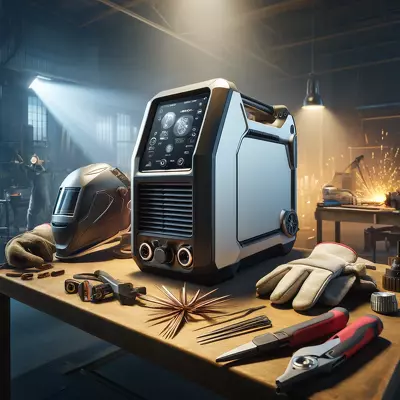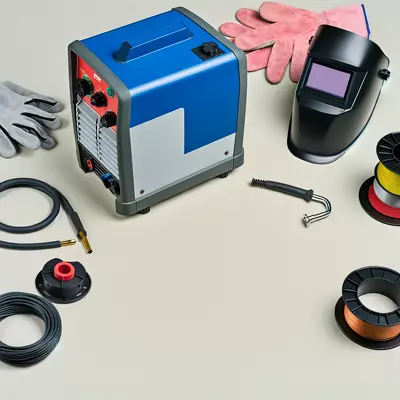Elevating Your Welding Game with the Best 2×4 Welding Lens

When it comes to welding, having the right gear is crucial for both safety and precision. Among the essentials, a top-quality 2×4 welding lens stands out. This lens not only protects the eyes from harmful rays but also provides clear visibility, making intricate work easier. It’s a must-have for welders seeking to enhance their performance and ensure their protection during tasks.
As an Amazon Associate, we earn a commission from qualifying purchases.
I. Introduction to the Best 2×4 Welding Lens
A. Importance of Quality Welding Lenses
The significance of high-quality welding lenses cannot be overstated. These critical components of welding gear play a pivotal role in safeguarding the welder’s vision against intense light and harmful radiation. A lens that lacks quality can lead to compromised safety, reduced visibility, and, consequently, inferior welding results. Thus, investing in a superior welding lens is essential for both protection and performance.
B. Benefits of Using a High-Quality 2×4 Welding Lens
Opting for a premium 2×4 welding lens brings numerous advantages:
- It ensures enhanced clarity, enabling welders to execute precise welds with greater accuracy.
- It offers robust protection against ultraviolet and infrared rays, crucial for eye health.
- High-grade lenses often feature improved durability and are designed to fit comfortably, making long welding sessions more bearable.
II. Key Features of an Ideal 2×4 Welding Lens
A. Clarity and Visibility
The cornerstone of an excellent welding lens lies in its ability to provide crystal-clear visibility. This clarity is vital for spotting intricate details and maintaining precision in welding tasks. Superior lenses boast anti-glare properties and are adept at minimizing eye strain during prolonged use.
B. Durability and Protection
A lens must be built to withstand the harsh conditions of welding environments. Durability ensures that the lens can endure exposure to sparks, debris, and extreme temperatures. Protection extends beyond physical durability, encompassing the lens’s capability to shield the eyes from harmful radiation and bright flashes.
C. Comfort and Fit
Comfort is paramount when selecting a welding lens. A well-fitting lens reduces the risk of distractions and allows welders to focus entirely on their tasks. Features such as lightweight construction and adaptable fit contribute significantly to overall comfort, enhancing the welding experience.
III. Top Recommendations for 2×4 Welding Lenses
A. Ridge 10 Pack of 2×4.25 Clear Welding Lenses
The Ridge pack stands out for its clarity and resilience. Designed to fit a variety of welding helmets, these lenses offer exceptional visibility and are manufactured from materials resistant to cracking and warping, ensuring longevity and consistent protection.
B. Saysurey 100 Pcs 2” x 4.25” Welding Clear Lenses Cover
For welders seeking value in quantity without sacrificing quality, the Saysurey pack is an ideal choice. These lens covers are universally compatible, providing clear vision and sturdy protection against the rigors of welding. Their ample quantity ensures that welders have replacements readily available when needed.
C. 25 Pack – Harris Welding Helmet/Hood Clear Lens Cover 2″ x 4.25″, 1010010
The Harris pack is renowned for its durability and protection. These lens covers are specifically crafted to withstand the demands of heavy-duty welding, offering both sharp visibility and robust safeguarding against UV and IR radiation.
IV. How to Choose the Right 2×4 Welding Lens
A. Assessing Your Welding Needs
Selecting the appropriate welding lens begins with a thorough evaluation of one’s welding activities. Factors such as the type of welding, the environment, and the frequency of use should guide the choice, ensuring the lens meets the specific requirements of the task.
B. Understanding Lens Specifications
Knowledge of lens specifications, including shade numbers, optical clarity, and light transmission, is crucial. These details help determine how well a lens can perform under various conditions, providing the necessary protection and visibility.
C. Considering User Reviews and Recommendations
Insights from other welders can be invaluable. User reviews and professional recommendations often highlight a lens’s real-world performance, assisting in making an informed decision.
V. Maintenance Tips for 2×4 Welding Lenses
A. Regular Cleaning Techniques
Maintaining lens clarity necessitates routine cleaning with appropriate solutions and soft cloths to avoid scratches. Proper cleaning not only preserves visibility but also extends the lens’s lifespan.
B. Proper Storage Solutions
When not in use, lenses should be stored in a clean, dry place to prevent damage and contamination. Protective cases or pouches are recommended to shield the lenses from physical harm.
C. Handling and Care Best Practices
Handling lenses with care and avoiding direct contact with surfaces that could cause scratches ensures their durability and effectiveness. Regular inspections for any damage or wear are also advisable to maintain optimal performance.
VI. FAQs
Q: How often should I replace my welding lens?
A: Replacement frequency depends on usage and condition, but regularly inspecting for damage or diminished clarity can guide your decision.
Q: Can I use any 2×4 lens in my welding helmet?
A: While many 2×4 lenses are designed for universal fit, it is essential to check compatibility with your specific helmet model.
Q: What shade number is suitable for general welding tasks?
A: Shade numbers between 9 and 13 are commonly used for various welding activities, but the specific task and preference may dictate the ideal shade.
Q: Are clear lenses suitable for all types of welding?
A: Clear lenses are primarily used for protection against debris and sparks. For arc welding, tinted lenses with appropriate shade numbers are necessary.
Q: How do I clean my welding lens?
A: Use a soft, lint-free cloth and a mild cleaning solution or lens cleaner. Avoid harsh chemicals and abrasive materials.
Q: Can a 2×4 welding lens protect against all forms of radiation?
A: High-quality lenses are designed to shield eyes from UV and IR radiation, but ensuring the lens meets industry standards is crucial for complete protection.
Q: Is it necessary to use a lens cover with my welding lens?
A: Using a lens cover can extend the life of your welding lens by protecting it from scratches and splatter.
Q: How does an auto-darkening 2×4 welding lens work?
A: An auto-darkening 2×4 welding lens contains special liquid crystals and light sensors that detect the intense light from welding and automatically adjust the darkness of the lens in a fraction of a second.
VII. Conclusion
A. Best Offer
The Ridge 10 Pack of 2×4.25 Clear Welding Lenses emerges as the top recommendation for its exceptional blend of clarity, durability, and versatility, making it an excellent choice for welders at all levels.
B. The Alternative
For those seeking quantity and quality, the Saysurey 100 Pcs 2″ x 4.25″ Welding Clear Lenses Cover provides a valuable alternative. It offers ample lens covers to ensure that welders are well-stocked.
VIII. Suggested Readings
Before embarking on any welding project, enriching one’s knowledge can make a significant difference. The following titles offer insights into the world of welding, from beginner guides to more advanced techniques:
- “Welding For Dummies” by Steven Robert Farnsworth: A comprehensive guide that demystifies welding for novices, providing a solid foundation in various welding techniques.
- “The Welding Business Owner’s Hand Book” by David Zielinski: Offers practical advice for starting and running a successful welding business, covering everything from equipment selection to marketing strategies.
- “Modern Welding Technology” by Howard B. Cary: An in-depth look at the latest advances in welding technology, suitable for students and professionals seeking to update their skills.
These resources serve as valuable tools for both aspiring and experienced welders, offering a wealth of information on a wide range of welding techniques and practices. In addition to honing skills, continued learning can also inspire innovation and excellence in the field, marking a welder’s journey with milestones of mastery and achievement.






